Filter by

Fractal Flow Design: How to Design Bespoke Turbulence and Why
This book focuses on turbulent flows generated and/or influenced by multiscale/fractal structures. It consists of six chapters which demonstrate, each one in its own way, how such structures and objects can be used to design bespoke turbulence for particular applications and also how they can be used for fundamental studies of turbulent flows.
- Edition
- -
- ISBN/ISSN
- 978-3-319-33310-6
- Collation
- VII, 177 pages
- Series Title
- CISM International Centre for Mechanical Sciences
- Call Number
- -
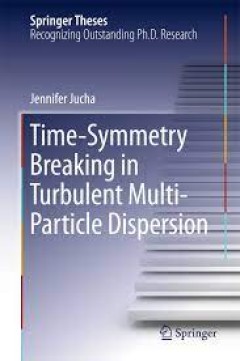
Time-Symmetry Breaking in Turbulent Multi-Particle Dispersion
This thesis presents experimental and theoretical investigations of the connection between the time asymmetry in the short-time evolution of particle clusters and the intrinsic irreversibility of turbulent flows due to the energy cascade. The term turbulence describes a special state of a continuous medium in which many interacting degrees of freedom are excited. One of the interesting phen…
- Edition
- -
- ISBN/ISSN
- 978-3-319-19192-8
- Collation
- -
- Series Title
- -
- Call Number
- -

Thermal-Hydraulic Analysis of Nuclear Reactors
This text covers the fundamentals of thermodynamics required to understand electrical power generation systems and the application of these principles to nuclear reactor power plant systems. It is not a traditional general thermodynamics text, per se, but a practical thermodynamics volume intended to explain the fundamentals and apply them to the challenges facing actual nuclear power plants sy…
- Edition
- -
- ISBN/ISSN
- 978-3-319-17434-1
- Collation
- -
- Series Title
- -
- Call Number
- -
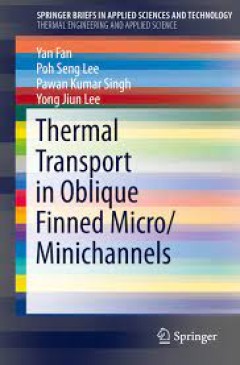
Thermal Transport in Oblique Finned Micro/Minichannel
The main aim of this book is to introduce and give an overview of a novel, easy, and highly effective heat transfer augmentation technique for single-phase micro/minichannel heat sink. The specific objectives of the volume are to: Introduce a novel planar oblique fin microchannel and cylindrical oblique fin minichannel heat sink design using passive heat transfer enhancement techniques Investi…
- Edition
- -
- ISBN/ISSN
- 978-3-319-09647-6
- Collation
- -
- Series Title
- -
- Call Number
- -
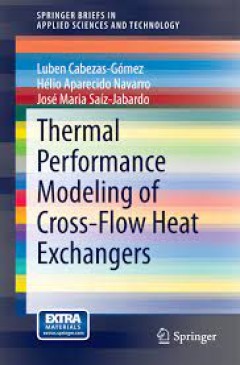
Thermal Performance Modeling of Cross-Flow Heat Exchangers
This monograph introduces a numerical computational methodology for thermal performance modeling of cross-flow heat exchangers, with applications in chemical, refrigeration and automobile industries. This methodology allows obtaining effectiveness-number of transfer units (e-NTU) data and has been used for simulating several standard and complex flow arrangements configurations of cross-flow he…
- Edition
- -
- ISBN/ISSN
- 978-3-319-09671-1
- Collation
- -
- Series Title
- -
- Call Number
- -
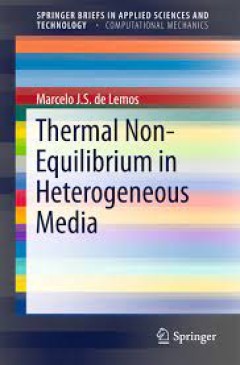
Thermal Non-Equilibrium in Heterogeneous Media
This book presents, in a self-contained fashion, a series of studies on flow and heat transfer in porous media, in which distinct energy balances are considered for the porous matrix and for the permeating fluid. Detailed mathematical modeling is presented considering both volume and time averaging operators simultaneously applied to the governing equations. System involving combustion in the g…
- Edition
- -
- ISBN/ISSN
- 978-3-319-14666-9
- Collation
- -
- Series Title
- -
- Call Number
- -

Fluid-Structure-Sound Interactions and Control: Proceedings of the 3rd Sympos…
These proceedings primarily focus on advances in the theory, experiments, and numerical simulations of turbulence in the contexts of flow-induced vibration and noise, as well as their control. Fluid-related structural vibration and noise problems are often encountered in many engineering fields, increasingly making them a cause for concern. The FSSIC conference, held on 5-9 July 2015 in Perth, …
- Edition
- -
- ISBN/ISSN
- 978-3-662-48868-3
- Collation
- XIV, 446 hlm.
- Series Title
- Lecture Notes in Mechanical Engineering
- Call Number
- -

Theoretical and Applied Aerodynamics and Related Numerical Methods
This book covers classical and modern aerodynamics, theories and related numerical methods, for senior and first-year graduate engineering students, including: -The classical potential (incompressible) flow theories for low speed aerodynamics of thin airfoils and high and low aspect ratio wings. - The linearized theories for compressible subsonic and supersonic aerodynamics. - The nonlinear …
- Edition
- -
- ISBN/ISSN
- 978-94-017-9825-9
- Collation
- -
- Series Title
- -
- Call Number
- -

Theoretical Modelling of Aeroheating on Sharpened Noses Under Rarefied Gas Ef…
Theoretical Modelling of Aeroheating on Sharpened Noses under Rarefied Gas Effects and Nonequilibrium Real Gas Effects employs a theoretical modeling method to study hypersonic flows and aeroheating on sharpened noses under rarefied gas effects and nonequilibrium real gas effects that are beyond the scope of traditional fluid mechanics. It reveals the nonlinear and nonequilibrium features, disc…
- Edition
- -
- ISBN/ISSN
- 978-3-662-44365-1
- Collation
- -
- Series Title
- -
- Call Number
- -
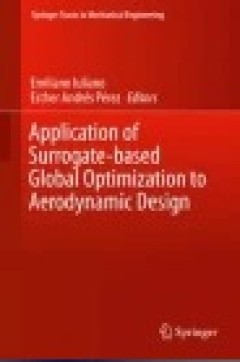
Application of Surrogate-based Global Optimization to Aerodynamic Design
Aerodynamic design, like many other engineering applications, is increasingly relying on computational power. The growing need for multi-disciplinarity and high fidelity in design optimization for industrial applications requires a huge number of repeated simulations in order to find an optimal design candidate. The main drawback is that each simulation can be computationally expensive – this…
- Edition
- Ed. 1
- ISBN/ISSN
- 978-3-319-21506-8
- Collation
- XIV, 72
- Series Title
- Springer Tracts in Mechanical Engineering
- Call Number
- 629.47 APP a
 Computer Science, Information & General Works
Computer Science, Information & General Works  Philosophy & Psychology
Philosophy & Psychology  Religion
Religion  Social Sciences
Social Sciences  Language
Language  Pure Science
Pure Science  Applied Sciences
Applied Sciences  Art & Recreation
Art & Recreation  Literature
Literature  History & Geography
History & Geography